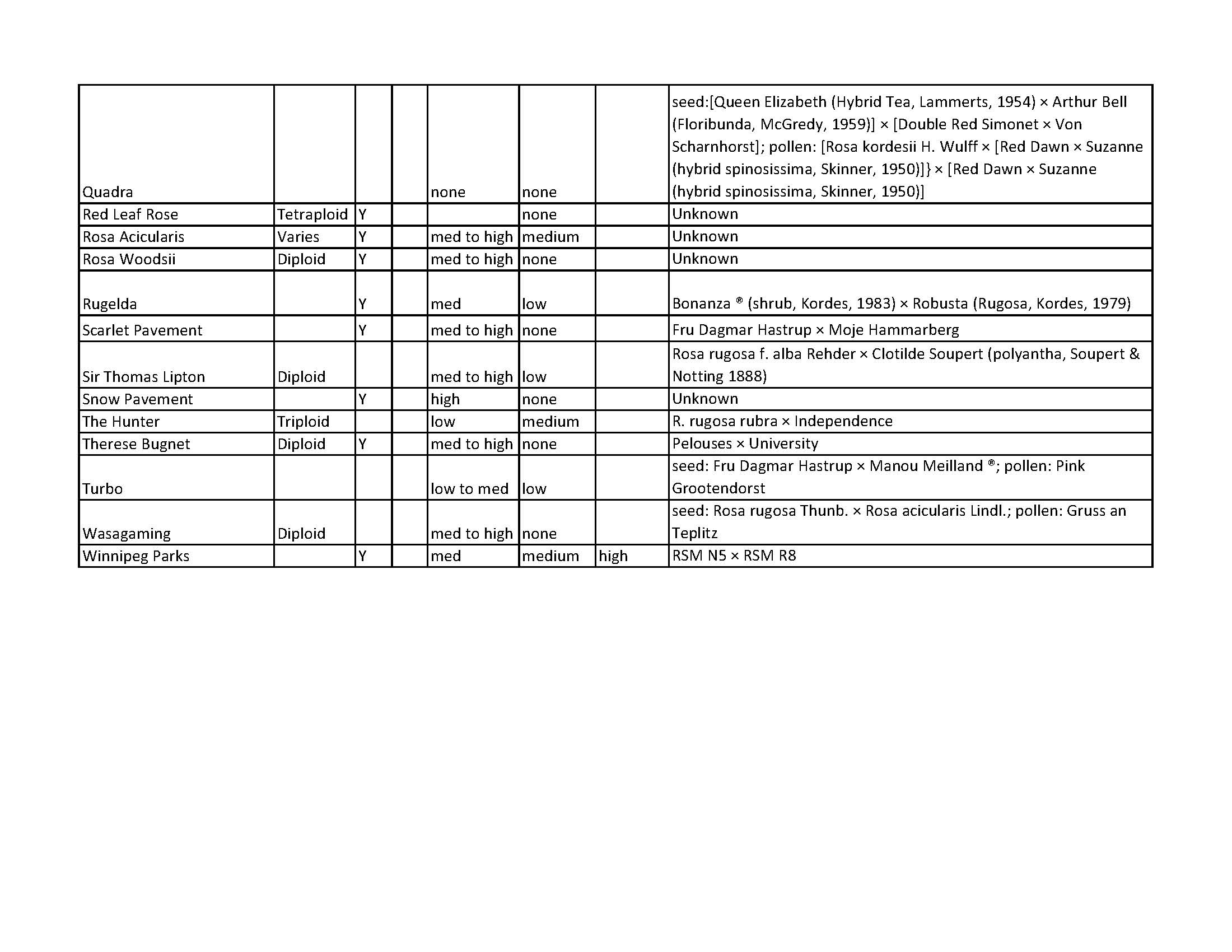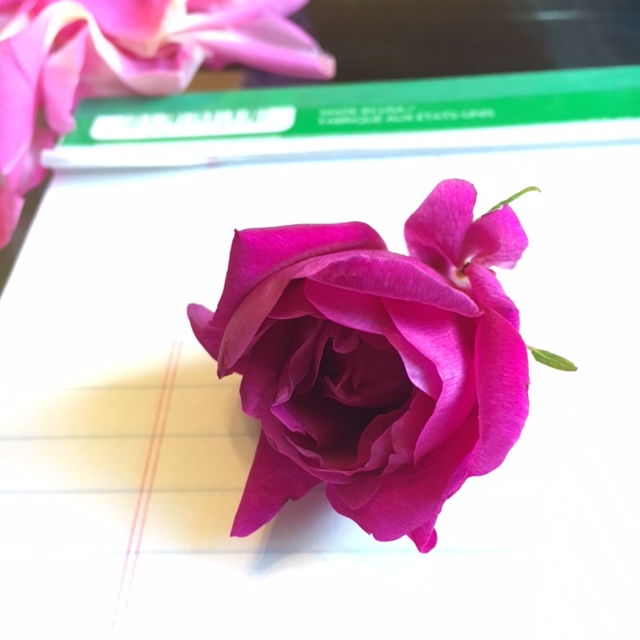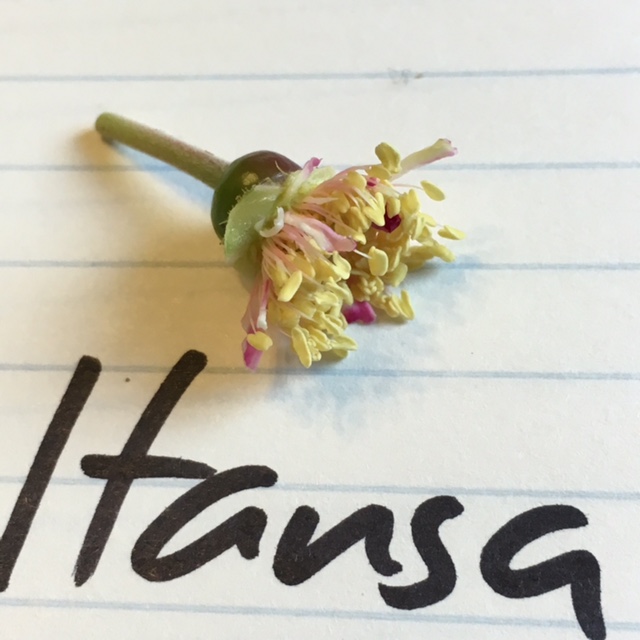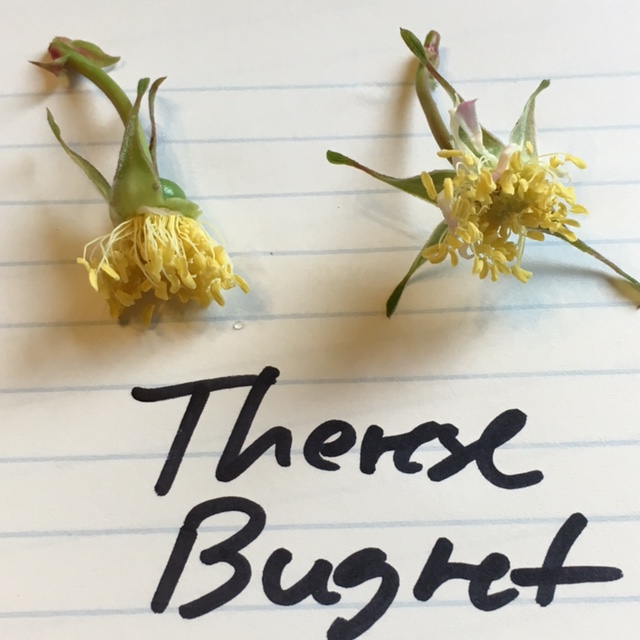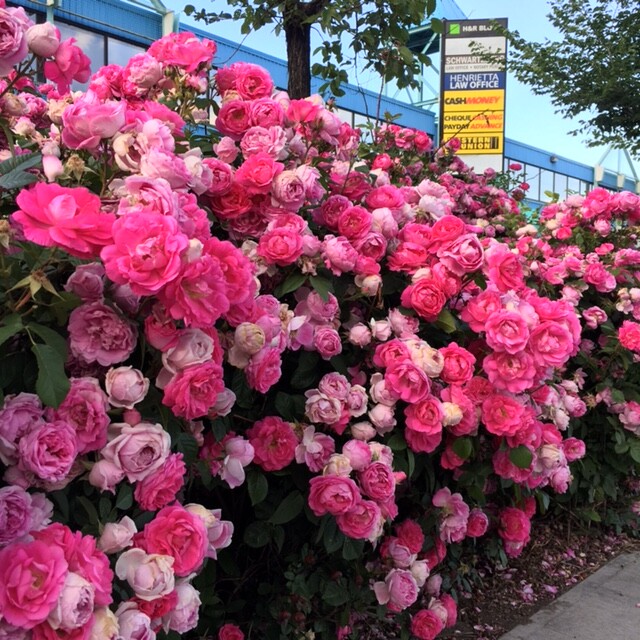Paul, thank you! I feel pressure to get a cross done this week with the short growing season if I want the hips to ripen before winter comes. This is my third year into growing roses, when I started I always wanted to get into breeding. I got excited last night and created a spreadsheet (attached below) of everything I have available. Ploidy and parent info is based on HMF, and disease and fragrance based on my own observations. There are gaps as I haven’t figured it out yet. If anyone would like to make suggestions, any help with choosing a first few crosses is greatly appreciated.
At this point it looks like I am aiming for more refined fragrant rugosa… or getting some fragrance into the modern roses.
Another rose I have which is very interesting is Michel Trudeau (purchased from Sunnyside Garden Center in Calgary). It has the most brilliant red foliage in the fall, even brighter than Therese Bugnet.
Mark, fortunately I have some OP (thank you for clarifying this term) hips which have set on Winnipeg Parks and Rosa Acicularis which I can at least play around with.
Paul, great idea on contacting Olds College, I had not thought about that! Olds College is where I originally obtained suckers of Prairie Peace from, for a very modest price. I usually drop by there a few times a year. A few weeks ago all their roses were in bloom, I am sure if I ask they won’t mind if I collect some pollen. They have Maigold, Metis, Tuscany Superba and Willian Baffin there, which I would also love to experiment with. They also had some very vigourous John Davis which were in very full bloom. We had a mild winter here so growth on most roses this year is absolutely amazing (for example, I came across these in central Calgary, 'Morden Centennial' Rose Photo).
I discovered last week another amazing public garden in Calgary which contains a decent established collection of roses - the Botanical Gardens of Silver Springs, botanicalgardensofsilversprings.ca. They had Persian Yellow, and many of the Morden and Parkland varieties. It is volunteer run and the gardens were well kept and tidy.
I have not been to the Brooks Rose Garden yet, but also read volunteers help to maintain it, I would love to go there one day, I think they have Prairie Peace as well (http://www1.agric.gov.ab.ca/$department/deptdocs.nsf/all/opp4386/$FILE/rosegarden.pdf).
In my excitement, I added more photos and captions to HMF, you can also find me under HMF people as ‘prairie_northrose.’ Sometimes I add photos of plants in the garden centers, while others are from my own collection.
Henry, thank you for the fantastic resources! Ahh, I completely forgot about the Prairie Garden magazine! You have some of the best information, I have long followed your posts on Garden Web, and have saved and read many of your links. I am also in a spray-free garden and enjoy reading research articles in my spare time.
If anyone can help clarify, here are a few other beginner questions:
-
There are roses I have listed on HMF as “Hybrid Rugosa,” with no description of ploidy (ex. Snow Pavement, Rugelda, Hansaland). Does this mean they are not diploid, and could be anything? Or could they be diploid? Does a more complicated parentage usually suggest anything other than diploid?
-
Are the ploidy descriptions on HMF reliable?
Thank you to everyone for your tremendous help so far!!! Hopefully I will have some planned crosses done by the end of the week. Some roses are about to enter their first flush, while others are gearing up for their second.
If you have suggestions for crosses based on my attached list, feel free to let me know.

